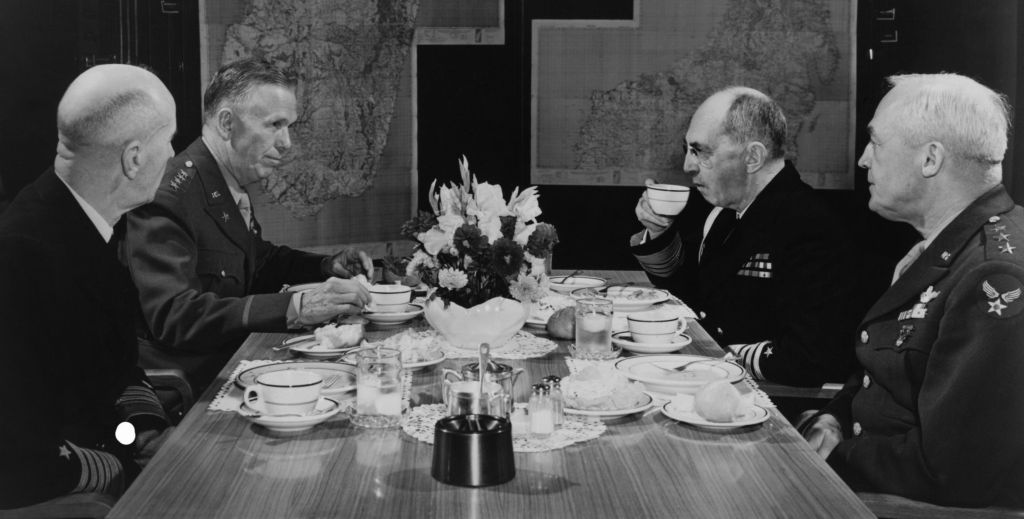Authors:
Historic Era: Era 8: The Great Depression and World War II (1929-1945)
Historic Theme:
Subject:
August 2023 | Volume 68, Issue 5


Authors:
Historic Era: Era 8: The Great Depression and World War II (1929-1945)
Historic Theme:
Subject:
August 2023 | Volume 68, Issue 5

Editor’s Note: David Dean Barrett is a military historian specializing in World War II and is the author of 140 Days to Hiroshima: The Story of Japan’s Last Chance to Avert Armageddon, in which portions of this essay appeared.
On May 25, 1945, at the end of a long rectangular table at the Pentagon, sat General of the Army George C. Marshall and Admiral William D. Leahy. The two men had overseen all American armed forces during World War II. They were flanked by eight officers on each side. Also in attendance were Chief of Naval Operations Admiral Ernest King, Chief of the Army Air Forces General Henry (“Hap”) Arnold, and the members of the Joint Staff Planners. The meeting’s purpose was to finalize plans for the invasion of Japan.
Preparations had already begun in advance of the planned invasion. The Pentagon had moved to redeploy hundreds of thousands of men from Europe to the Pacific, on the assumption that the war with Germany would end no later than June 1, 1945. In the Summary of Redeployment Forecast dated March 15, 1945, the average number of men required was estimated at 40,000 per month, or a total of 720,000, just for army replacements from dead and evacuated wounded in the Pacific during the eighteen-month period associated with the redeployment.
General Marshall opened the discussion by reminding the group of President Truman’s commitment to impose unconditional surrender on Japan. He went on to state that such a surrender was a completely unknown concept to the Japanese, and that, to date, throughout the totality of the Pacific War, not a single organized “Jap” unit had surrendered to any American forces. As such, the Joint Staff Planners and General Marshall did not believe the continuing blockade and bombardment of the Japanese home islands would achieve that objective. An invasion, however, could be carried out to utter defeat, and the Army recommended it as the soundest strategy.

The Navy was not as convinced. Admiral Leahy argued: “Before we move on to the discussion of the invasion plans, I’d like to express my personal belief that we have not reached a point